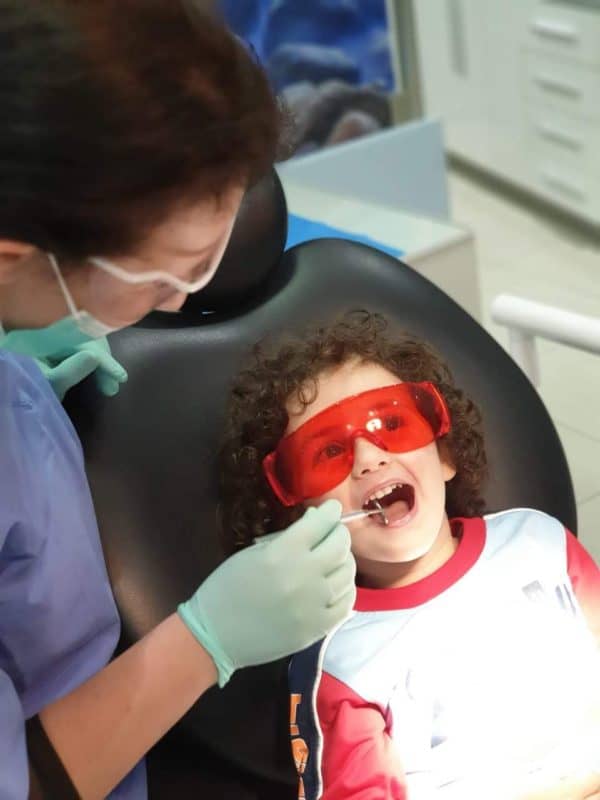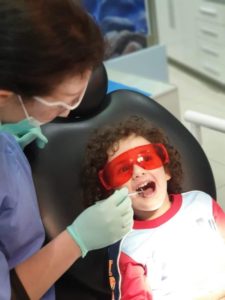
 At about 3-6 years of age it is advisable to have a first dental visit to allow the dentist to promote behaviors and habits aimed at maintaining the health and well-being of the mouth, immediate correction of the problems and preventing their deterioration. Very rarely an orthodontic treatment is required while the childrens are still on baby teeth. At this stage, it is important for the patient to be included in dental disease prevention programs and to address any behavior or habit that may adversely affect the growth and development of jaws and teeth.
At about 3-6 years of age it is advisable to have a first dental visit to allow the dentist to promote behaviors and habits aimed at maintaining the health and well-being of the mouth, immediate correction of the problems and preventing their deterioration. Very rarely an orthodontic treatment is required while the childrens are still on baby teeth. At this stage, it is important for the patient to be included in dental disease prevention programs and to address any behavior or habit that may adversely affect the growth and development of jaws and teeth.
In the area of primary prevention, in this age group to maintain a healthy mouth, the dentist and hygienist promote:
- Importance of proper oral hygiene,
- advising on the use of a suitable toothbrush and proper washing technique.
- Use of fluoride and placement of silants to prevent the onset of caries
- healthy eating habits
Secondary prevention involves early detection of a problem. Malformations represent a deviation from the normal closure of the mouth. In this pediatric age group, the dentist needs to overcome any problem that may aggravate occlusion, especially he will need to assess whether there are bad habits such as atypical deglutition ,thumb sucking, oral respiration, the presence of bruxism, etc.


 shqip
shqip Italiano
Italiano